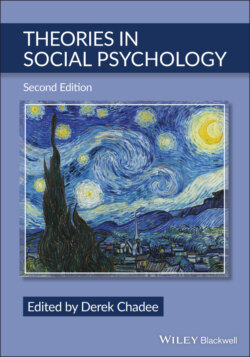Читать книгу Theories in Social Psychology - Группа авторов - Страница 10
2 Toward an Affect Arousal Reactance Theory: Reactance Theory Revisited
ОглавлениеDerek Chadee and Mary Chadee
Reactance theory was developed by Jack W. Brehm and articulated in his Theory of Psychological Reactance (1966). Leon Festinger and Stanley Schachter were the editors of the monograph series, which included Brehm’s seminal work. In fact, Brehm’s Ph.D. supervisor was Leon Festinger and his Ph.D. dissertation tested the free-choice dissonance paradigm which later appeared in 1956 in the Journal of Abnormal and Social Psychology as the first published empirical research on cognitive dissonance. Later, Brehm systematically wrote on cognitive dissonance (e.g., Brehm, 1962; Brehm & Cohen, 1962). The genesis of the theory of psychological reactance appears to have taken place in the womb of cognitive dissonance theory. However, the baby grew with many different characteristics from the mother. Both theories of cognitive dissonance and psychological reactance are theories of motivational arousal and reduction. In fact, Miron and Brehm (2006, p. 9) recognize that “Festinger had constructed a theory (cognitive dissonance) that assumed an inner motivational process rather than assuming that all influences between stimuli and behavior were simple and direct. It was in this context that Brehm and Cohen (1962), both in the Yale Attitude Change Program at the time, carried out an extensive program of research on persuasion, largely based on dissonance theory, but with some attention to special cases of resistance to social influence. After [Brehm] … became more interested in the occurrence of resistance to social influence, and that interest eventuated in the formulation of reactance theory.”
